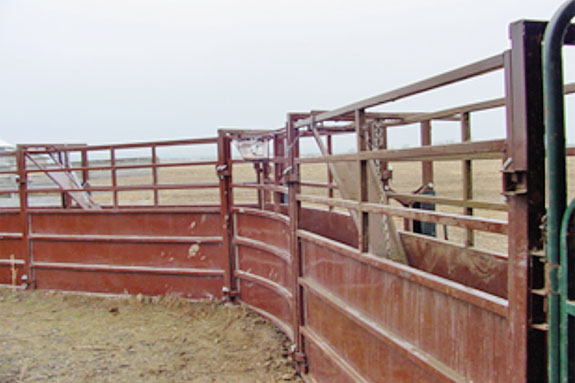This time of year provides a great opportunity to do some maintenance on your equipment and facilities.
Having your equipment and facilities in good working order can help you accomplish your Beef Quality Assurance (BQA) goals.
Below are two equipment maintenance items to work on this summer in regards to BQA.
Handling facilities
It is recommended that producers take time to walk through their working facilities and see what maintenance should be done in preparation for working cattle this fall.
Poorly maintained equipment can cause injury to both cattle and handlers and contribute to carcass quality defects like bruising. Facilities like these also add stress to both the cattle and producers, which can affect beef quality.
The 2005 National Beef Quality Audit found an 11 percent decrease in bruising from 2000, but 35 percent of carcasses still had one to four bruises.
The 2007 National Market Cow and Bull Beef Quality Audit also reported a decrease in bruising from the 1999 audits, but still found some degree of bruising in 60 percent of beef cows and 50 percent of beef bulls. Bruises were most likely to occur in the loin for finished cattle and the round for market cows and bulls.
Inspect your facility and fix any loose nails or wire, broken boards and broken panels you find. If your trailers are parked for the summer, now is the time to clean and examine them for any broken pieces that could cause injury.
Don’t forget to inspect the footing in the trailers as well. Trailers without adequate footing can cause animals to fall, which also contributes to bruising.
If you find problems, take the time to make any modifications to your facility and trailers to make the flow of animals smoother this fall.
Tight corners, slippery surfaces, shadows across alleyways and open sides where movement outside the working facility may frighten animals can all cause cattle to balk. Take a moment to look at the two pictures and compare the pros and cons of each.
Facility A (top right) has nice rounded corners and tall solid sides which both help with the flow of animals. However, it has a shadow across the alleyway which may cause animals to balk.
 Facility B (right) also has a rounded corner in the alleyways but, with the open sides, too much movement of handlers on the outside of the alleyway may cause animals to balk.
Facility B (right) also has a rounded corner in the alleyways but, with the open sides, too much movement of handlers on the outside of the alleyway may cause animals to balk.
Cleaning vaccination equipment
Inadequate syringe cleaning may affect vaccine efficacy or could harbor bacteria that may lead to infections at the injection site.
During a survey of 129 Idaho beef producers and their adoption of BQA practices, they were asked about syringe cleaning techniques.
Out of 129 producers, 83 producers (64 percent) followed the BQA guidelines to use only hot water for cleaning. The remainder used soap and water, alcohol or disinfectant for syringe cleaning.
Ninety-three producers (76 percent) followed BQA guidelines to completely disassemble the syringe when cleaning; 25 producers reported just squirting water through the syringe and four reported other cleaning methods.
The data shows that while the majority of producers are following BQA recommendations, there is room for improvement in syringe cleaning among producers.
To clean multiple-dose syringes according to BQA guidelines, producers should clean any manure or residue on the outside of the syringe first and then take the syringe completely apart. Each component of the syringe should be cleaned with hot, near-boiling water.
The syringe should be allowed to dry completely, reassembled and stored in a clean, dry location. It doesn’t do much good to carefully clean the syringes and lay them on a counter with dirt and mouse droppings to dry.
Soap or chemical disinfectants leave residues inside the syringe that can affect future modified live vaccines and may harm seals in the syringe.
If your syringe cannot be taken completely apart, then drawing hot water through the syringe and feeder tubes can clean them. Remember to clean the syringes completely after each use.
So when a little rain shower keeps you out of the hayfield, use that time to work on either of the two projects we’ve mentioned. They will help with your BQA goals and make working cattle that much smoother this fall. ![]()
PHOTO
TOP: Facility A, the round corners and tall sides keep cattle moving, but the shadows will be distracting.
BOTTOM: Facility B, open sides may also spook cattle with movement of handlers. Photos courtesy of Stephanie Etter.
Stephanie Etter
Extension Educator
University of Idaho







